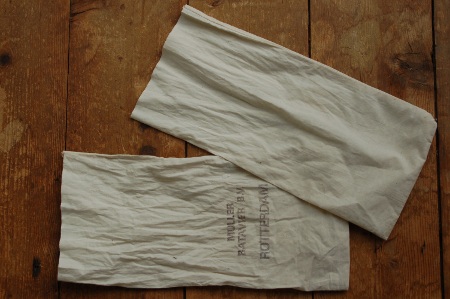Years ago now, I posted the advice that if you save beans from your garden, you should freeze them before storing them. This year, I’m paying the price of not following my own advice.
In addition, these probably have something to do with it:
These are sacks I buy my coffee in. I’ve posted about this before too. I buy green coffee beans, that come from many exotic tropical places in the world, then roast them myself.
The holes in my beans are from Bean Weevils, more specifically I suspect Coffee Bean Weevils.
Of course I thought I was being clever by reusing my coffee sacks to store my garden beans!
In my case, I think I caught it pretty fast. I first noticed them in November, and quickly froze my bean seeds. Weevils are hardy enough to survive a day or two in the freezer, but are usually killed after several days. Occasionally you have to thaw and refreeze the seeds, in order to mimic the weather cycles that cause them to hatch, in order to kill remaining eggs. In my case, freezing them once seems to have taken care of it.
I’ve had a couple of reinfestations over the last few weeks, and by now all of my bean seeds are a little suspect. I don’t think I lost any important varieties, but did throw some unimportant ones away. The most irritating thing of course is now my beans aren’t appetizing to eat, because there are dead larvae hidden away in many of them. I’m not sure how this will impact the germination rates of my seeds, but I’m sure it will be reduced for many of them.
For those of you hoping to trade bean seeds with me, I’m sure you’ll understand why I’m not sending them out this year.
Seed storage is an all too often neglected topic, and one that’s very important. I’ve heard it said loosing seeds in storage is more common than crop failures.
You often have to balance risks like this. It’s very possible for example to lose seeds in the process of freezing them, or storing them in an airtight container. It’s also possible to lose them to pests like this. Sometimes there aren’t any right or wrong answers…




